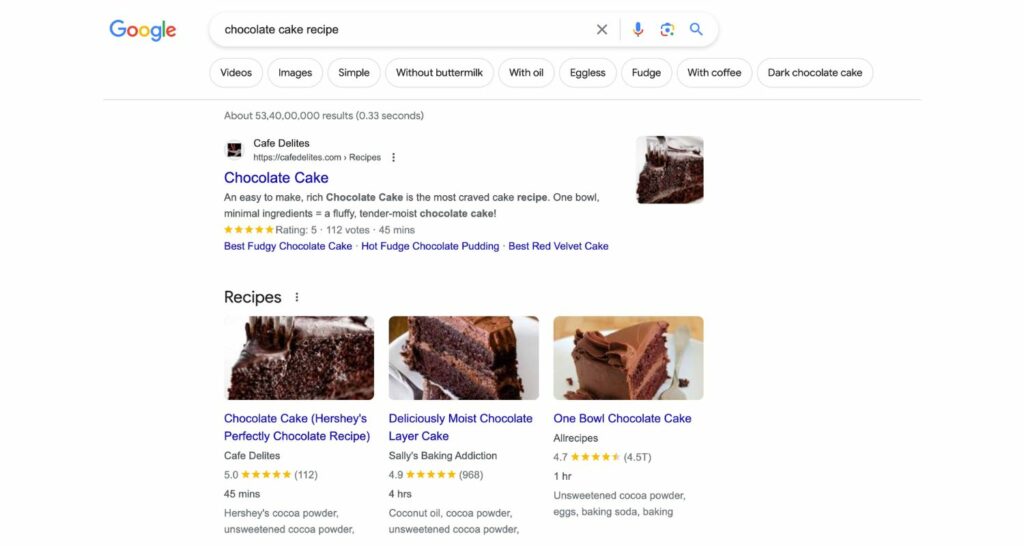Blog vs. Social Media Writing: Blogs offer in-depth analysis and personal insights, which are ideal for detailed storytelling and SEO benefits. Social media provides instant engagement and wider reach, perfect for quick updates and direct interaction with audiences. Both platforms serve distinct digital marketing and communication strategies.
The immediacy, engagement, and virality potential these platforms offer are simply too significant to ignore. Keep reading to uncover blog vs. social media writing.
What is a Blog Post?- Blog vs. Social Media Writing
A blog post is a piece of writing published on a website, typically conversational, aimed at providing valuable information or insights to readers. Additionally, it’s a digital canvas for individuals or businesses to share knowledge, express thoughts, and engage with a targeted audience.
Characteristics of blog posts include a structured format with headings, subheadings, and often multimedia elements like images or videos to enhance readability and engagement.

There are several types of blog posts, including:
- How-to Guides: Step-by-step instructions to accomplish a task.
- Listicles: Articles are organized in a list format, accessible to skim, and often entertaining.
- Case Studies: In-depth analysis of a particular subject or project.
- Personal Stories: Sharing personal experiences to inspire or educate readers.
What Are Social Media Posts?- Blog vs. Social Media Writing
Social media posts are content shared on platforms like Facebook, Twitter, and Instagram. These posts are designed to engage, entertain, or inform a broad audience through a mix of text, images, videos, and interactive elements.
Moreover, the key characteristics of social media posts include brevity, visual appeal, and a direct call to action, encouraging users to engage through likes, shares, and comments.
Types of social media content include:
- Photos and Videos: Captivating visuals that grab attention and convey messages quickly.
- Polls and Quizzes: Interactive content that encourages participation and feedback.
- Infographics: Visual representations of information or data, making complex information more accessible to digest.
- Live Streams: Real-time video content that offers an authentic glimpse into events or behind-the-scenes.

Furthermore, both blog and social media posts play crucial roles in digital marketing and personal branding, each serving unique purposes in content strategy.
Blog vs. Social Media Writing
Audience Engagement: Social media excels in immediate interaction, fostering quick comments, likes, and shares. Blogs, while potentially less instant in engagement, allow for deeper connections through comprehensive comments and discussions.

Content Lifespan: Blog posts often remain relevant and discoverable for months or even years, thanks to SEO. Social media posts, conversely, have a shorter lifespan, with visibility dwindling rapidly in fast-moving feeds.
SEO and Discoverability: Blogs are SEO powerhouses, driving long-term traffic from search engines with well-optimized content. Furthermore, social media posts primarily rely on platform algorithms and hashtags for discoverability, offering more immediate but less enduring visibility.
Benefits of Blog Posts
Detailed Analysis and Depth of Content: Blogs provide a platform for thorough exploration of topics, offering readers in-depth insights and comprehensive analysis not typically found in social media’s concise posts.
SEO Advantages: With the right keywords and optimization strategies, blog posts significantly boost online visibility, attracting organic traffic from search engines over time.

Monetization Opportunities: Blogs offer diverse monetization avenues, including affiliate marketing, sponsored content, and advertisements. Additionally, these opportunities can turn a blog into a lucrative venture, a feat more challenging to achieve solely through social media.
Disadvantages of Blog Posts
Time and Effort Required: Crafting high-quality blog posts demands significant time and effort, from research and writing to editing and publishing.

Technical Knowledge Needed: Running a blog requires a basic understanding of web hosting, SEO, and content management systems, which can be daunting for beginners.
Slower Audience Growth Rate: Unlike social media, where content can quickly go viral, growing a blog’s audience is often a slow and steady process, relying heavily on SEO and consistent content quality.
Limitations of Blog Posts
Dependence on Search Engine Algorithms: Blogs are heavily reliant on search engine algorithms for traffic. Changes in these algorithms can dramatically affect a blog’s visibility and audience reach.
Hosting and Maintenance Costs: Unlike social media, which is free to use, blogs incur costs for hosting, domain registration, and potentially premium themes and plugins.
Benefits of Social Media Posts
Immediate Engagement and Feedback: Social media allows for instant interaction with audiences, providing immediate feedback and engagement on content.

Viral Potential: Social media content can quickly go viral, reaching a vast audience in a short amount of time, thanks to the ease of sharing.
Ease of Use and Accessibility: Social media platforms are user-friendly and accessible to anyone with an internet connection, requiring no technical skills to start sharing content.
Disadvantages of Social Media Posts
Short Lifespan of Content: Content on social media platforms tends to have a brief visibility window, quickly getting buried under new posts.
Limited Control Over Platform Changes: Users are at the mercy of the platform’s changing policies and algorithms, which can affect content visibility and engagement.
Potential for Rapid Changes in Trends: Social media trends can change swiftly, making it challenging to keep content relevant and engaging.
Limitations of Social Media Posts
Algorithm Dependency for Visibility: Like blogs, social media posts are subject to platform algorithms, which determine the visibility of content to followers.
Limited Depth of Content: The concise nature of social media posts limits the depth of information that can be conveyed, making it difficult to provide detailed analysis or comprehensive insights.
Blogging vs. Social Media for Different Objectives
Products vs. Services
Products: For promoting products, social media shines with its ability to showcase visual content, such as images and videos, that highlight the product’s features and benefits. Quick, engaging posts can generate immediate interest and drive sales. Moreover, blogs complement this by providing detailed product reviews, how-to guides, and user testimonials, offering depth to persuade a more hesitant buyer.

Services: Services benefit greatly from blogging, where detailed case studies, client testimonials, and in-depth explanations of services can build trust and authority in a field. Social media supports service promotion by sharing success stories, client feedback, and engaging snippets of services in action, fostering a community around the service offered.
B2B vs. B2C
B2B (Business to Business): B2B strategies often thrive on blogging, where detailed industry analysis, white papers, and thought leadership posts can establish a company as an authority in its niche. LinkedIn, a professional networking platform, stands out for B2B social media marketing, facilitating connections and discussions with industry peers.
B2C (Business to Consumer): B2C strategies excel on visually-driven social media platforms like Instagram and Facebook, where engaging content can quickly capture consumer attention. Blogs serve as a supplementary tool, providing a space for storytelling, detailed product information, and lifestyle content that aligns with the brand’s voice and consumer interests.
Tailoring your strategy to your audience’s preferences and behaviors is key, whether through in-depth blog articles for those seeking detailed information or engaging social media posts for immediate interaction and visual appeal.
Strategies for Effective Use of Both Platforms- Blog vs. Social Media Writing
Each platform serves unique purposes and, when used together effectively, can significantly amplify your online presence and engagement.
Best Plan to Utilize Both
The key to a successful integration of blog and social media efforts lies in understanding the strengths of each platform and using them to complement each other. For instance, you can use social media to tease and promote your blog content, driving traffic to your website. Conversely, your blog can provide in-depth content that you can repurpose into bite-sized, shareable pieces for social media.
Personal Example: Imagine you run a small bakery. You write a blog post about “The Art of French Pastries” detailing the history, techniques, and your unique approach.

You can then share snippets of this post on Instagram or Facebook, along with mouth-watering images of your pastries, and direct followers to your blog for the full story. This not only increases your blog’s visibility but also engages your social media audience with compelling content.
Catching Up on Content Marketing News and Strategy
The digital marketing world is ever-evolving, with new trends, algorithms, and platforms emerging regularly. Additionally, staying informed about the latest content marketing news and strategies is essential. Subscribe to reputable marketing blogs, follow industry leaders on social media, and participate in webinars or workshops to keep your knowledge up-to-date.
Personal Example: Let’s say you’re a freelance graphic designer. By following influential designers on Twitter and subscribing to design blogs, you learn about the rising trend of animated infographics. Recognizing this opportunity, you start offering animated infographics as a service and share your creations on both your blog and social media.
This not only positions you as a forward-thinking designer but also attracts clients looking for innovative ways to present their data.
Moreover, the most effective content marketing strategy involves a symbiotic relationship between blogging and social media. By integrating your efforts across both platforms, you can maximize your reach, engagement, and conversion.

Staying informed and adaptable allows you to leverage the latest trends and technologies, keeping your content fresh and relevant. Remember, the goal is to provide value to your audience, whether they’re reading a detailed blog post or engaging with a quick social media update.
Deep Dives into Content Writing Strategies
Content writing is not just about putting words on a page; it’s about crafting messages that resonate, inform, and engage. Here, we explore three advanced strategies that can elevate your content writing game.
“No Filler or Fluff”: Achieving Conciseness and Relevance
In an era where attention spans are short, conciseness and relevance in writing have never been more critical. The key is to deliver value in every sentence, eliminating any content that doesn’t directly contribute to your message.
Start by outlining the main points you want to cover, ensuring each paragraph serves a purpose. In addition to that, use active voice and strong verbs to make your writing more direct and lively. Remember, it’s not about the word count but the impact of your words.
Waterfall Content Strategy: Maximizing Impact Across Platforms
The Waterfall Content Strategy involves creating a comprehensive piece of content. Like a detailed blog post or a report, and then breaking it down into smaller, platform-specific pieces.

For example, a long-form blog post can be repurposed into a series of social media posts, an infographic, and a short video.
Furthermore, this approach ensures consistency across platforms while maximizing the reach and engagement of your content. It’s about working smarter, not harder, by leveraging the initial effort to create a variety of content forms.
Making Technical Writing Accessible to Broader Audiences
Technical writing often runs the risk of being dense and inaccessible to those outside the field. The challenge lies in simplifying complex concepts without diluting their meaning. Additionally, use analogies and metaphors to explain technical terms, and include examples that relate to everyday experiences.
Moreover, breaking down information into digestible chunks and using visuals can also help make technical content more approachable. Engaging with your audience’s feedback is crucial to understanding which parts of your content might need further clarification or simplification.
Hence, by implementing these strategies, you can enhance the effectiveness of your content writing. Whether you’re aiming for brevity and impact, cross-platform consistency, or accessibility in technical communication.
FAQs
Which is better: social media or blogging?
Choosing between social media and blogging depends on your goals. Social media excels in immediate engagement and broad reach, making it ideal for quick updates and viral content. Blogging offers depth, SEO benefits, and a platform for detailed insights, building long-term authority. The best strategy often integrates both, leveraging their strengths to maximize visibility and engagement.
What is the difference between writing and blogging?
Writing is a broad term that encompasses creating text for various purposes, including fiction, non-fiction, scripts, and more. Blogging specifically refers to writing for blogs - online platforms where individuals or companies publish regular articles and posts. Blogging combines personal or professional insights with an informal or conversational style, often aimed at engaging an online audience and boosting SEO.
Is blog writing still a thing?
Yes, blog writing remains highly relevant. It continues to be a powerful tool for individuals and businesses to share expertise, insights, and updates. Blogs drive website traffic, improve SEO, and establish authority in a particular field or industry. With the rise of content marketing, quality blog content is more valuable than ever for engaging audiences and building brand trust.
What is better than a blog?
What's better than a blog depends on your objectives. Podcasts and video content platforms like YouTube offer dynamic alternatives for storytelling and audience engagement, catering to preferences for audiovisual content. These mediums can complement or serve as standalone platforms, often reaching audiences who prefer listening or watching over reading. However, blogs still hold unique advantages in SEO and detailed content delivery.
Which type of blog earns more?
Blogs focusing on finance, making money, personal health and wellness, technology, and personal development tend to earn more due to high demand and lucrative affiliate marketing opportunities. Finance and technology blogs, in particular, can attract high-paying advertisers and affiliate programs. Success in monetizing a blog also heavily depends on traffic, content quality, and effective use of SEO and social media marketing strategies.
Conclusion
Therefore, both blog and social media writing are pivotal for engaging audiences and building brand presence. Each platform requires a unique approach to captivate and communicate effectively.
Ready to elevate your brand with compelling blog posts and dynamic social media content? Hire me to craft messages that resonate and drive results. Let’s connect and create impactful narratives together.

